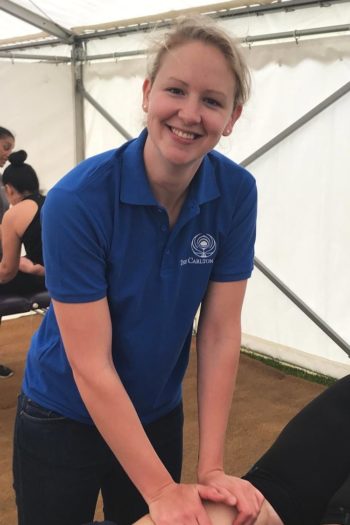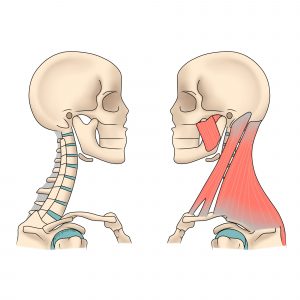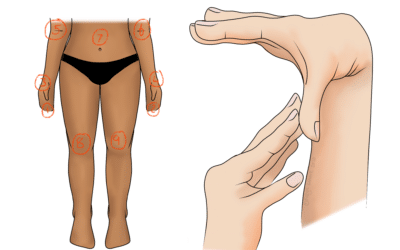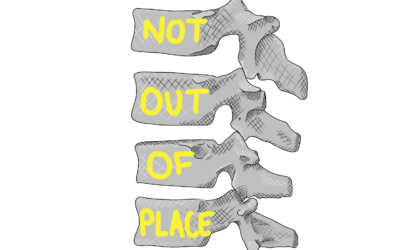This interview with Justin Robinson, the Principal Osteopath at The Carlton Clinic, was originally posted on Wild Kat Yoga and republished here with the kind permission of Kat MacLeod.
A few months back I started suffering from SI joint pain. Something I have never had before. What followed was weeks of learning about what was going on with me – how to relieve the pain, how to fix it, how to live with it. Honestly, it’s a journey I am still on and I am learning so much. Whenever something goes a little nutso in my body I always love to get my friend and Osteopath, Justine, from The Carlton Clinic to weigh in. So today, I’m really excited to share her insights with you.
I GUESS THE FIRST THING YOU ARE WONDERING IS, WHAT IS SI JOINT DYSFUNCTION AND HOW DO I KNOW IF I HAVE IT?
The Sacroiliac (SI) joint is the junction between the Sacrum (triangular bone at the base of the Spine) and the top of the pelvis (Iliac bone). An easy way to localise these is heading straight for the dimples at the base of your spine. In the past, there has been a lot of research surrounding how much movement is available at this joint, some disputing whether the joint moves at all. But, considering how often I see patients with a problem in this area, and that we are able to manipulate the SI joints, I believe they must have movement!
SI joint pain can often be found in the local area of the joint, or spreading around into the hips and gluteal muscles, or slightly down the hamstring muscle. It often does not refer further than this, differentiating it from Sciatic nerve pain – which often spreads down past the knee into the calf and ankle. SI joint pain is often aggravated by changing positions (especially straightening up out of a seated position), as the joint restriction does not easily allow for the movement required. Often, if you are flexed sitting or side-lying you will only feel a dull ache, but movement can trigger the sharp pain as the joint surfaces are not functioning together as they should. This further differentiates the pain from Sciatic pain, which is severe and relentless in any position.
SO MAYBE YOU’RE NODDING YOUR HEAD BECAUSE THIS SOUNDS LIKE YOU! HOW CAN YOU TREAT YOUR PAIN?
Immediate relief can be gained from applying heat (such as a hot water bottle or wheat bag) to the base of your spine whilst you are in a flexed position like sitting or side-lying. The muscle spasm associated with he restriction will hopefully relieve enough to try some stretches. In general keep moving between positions – the less you move, the less mobile the SI joints will be!
Ideally the sooner you are able to get a treatment either with an Osteopath/Physiotherapist/Chiropractor who manipulates, the sooner you should find relief, and clarification of the problem.
Within my Osteopathic practice, I find that deep and mobilising massage helps to release the muscular spasm, and I often use Western Acupuncture (Dry Needling) techniques to calm the spasmed area further. Certain manipulations and adjustments are then vital to gap the joint and hopefully remove the restriction.
WHAT’S NEXT?
If you drew a line down the upright human frame, the line and therefore the effects of gravity, pass through the sacrum – showing that this region is weighted down. If you were lacking core and surrounding muscular strength, these joints will be more inclined to lock up (see Yoga for a Better Functioning Butt). With the muscular presence, holding you up like a natural brace, combined with regular stretching and ensuring no postural strains in every day life (such as slumping over a desk, or leaning over something at the wrong height) this joint would be in a position of suspension and less likely to cause any restrictions.
I am very disinclined to suggest items like SI belts and lower back braces, as it’s the simple concept that if you rely on an item to give you support, the surrounding muscles have less work to do to stabilise the area and therefore start to weaken. So when the brace is removed the area is weaker than before, creating a reliance. Your own muscular stabilisation is paramount!
WHAT HAPPENS IF SI JOINT DYSFUNCTION IS LEFT UNTREATED?
I often see pregnant ladies with SI related joint pain, and PGP/SPD. The pelvis can be likened to the shape a bowl, if the SI joint is not functioning correctly, this will effect the pubic symphysis at the pubis bone. I often find that expectant mums do not have their SI or pelvis treated when necessary, which leads to a position change, and only when they start holding more weight from pregnancy do they find out that they get pelvis pain! I find the same to be true in people who carry an increased amount of weight, or neglect their core strength. A long term restriction could put more pressure on surrounding joints that are compensating for the lack of movement, causing wear in other places, e.g. the hip joints, lower lumbar spine levels or discs between the joints.
 Justine Robinson M.Ost is the Principal Osteopath at The Carlton Clinic based in Horley and Crawley of Sussex and Surrey.
Justine Robinson M.Ost is the Principal Osteopath at The Carlton Clinic based in Horley and Crawley of Sussex and Surrey.
To book an appointment with Justine or one of her associate osteopaths call 01293 784200 or book online here.



















